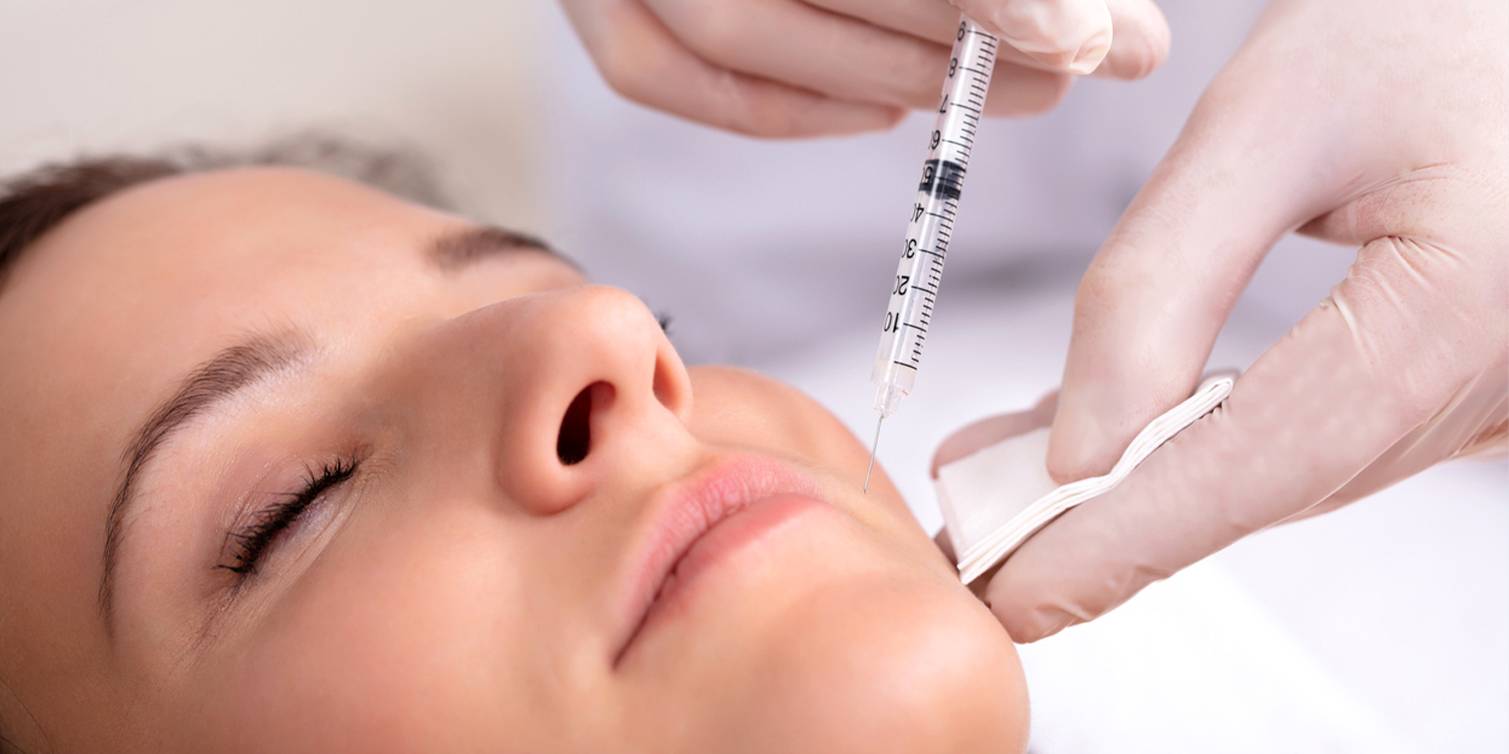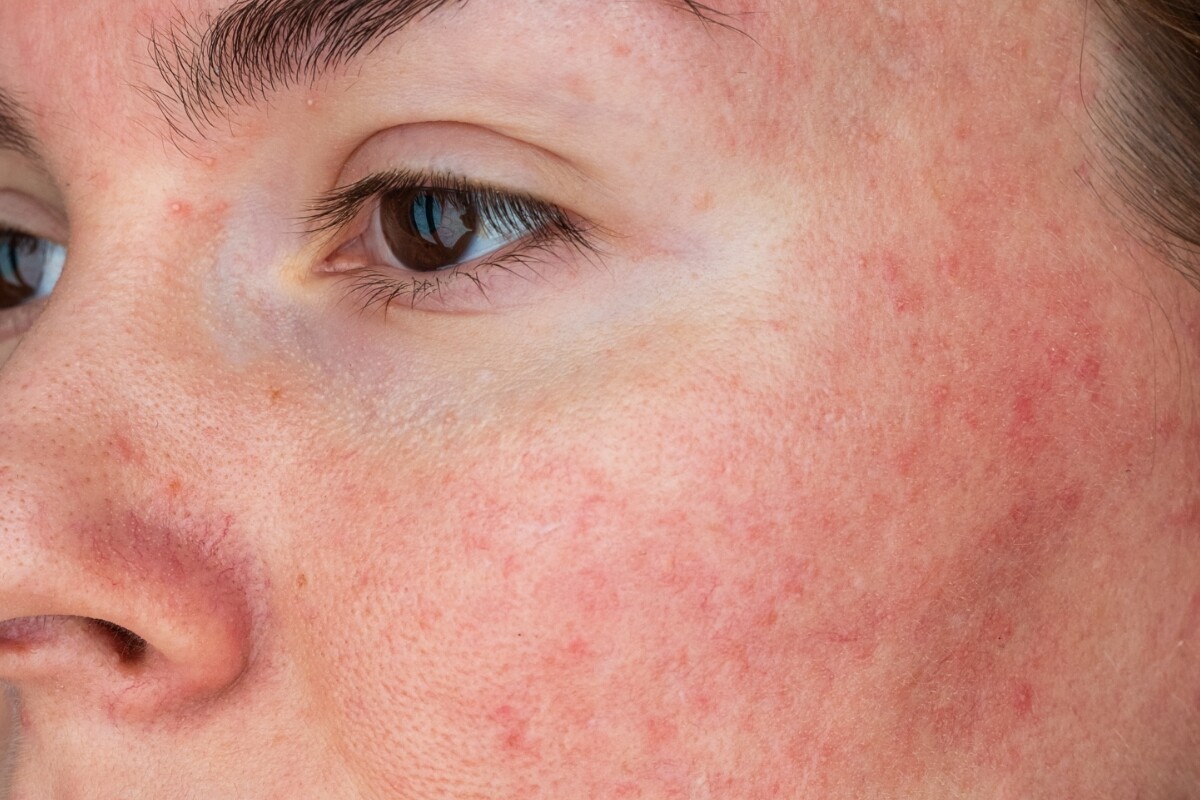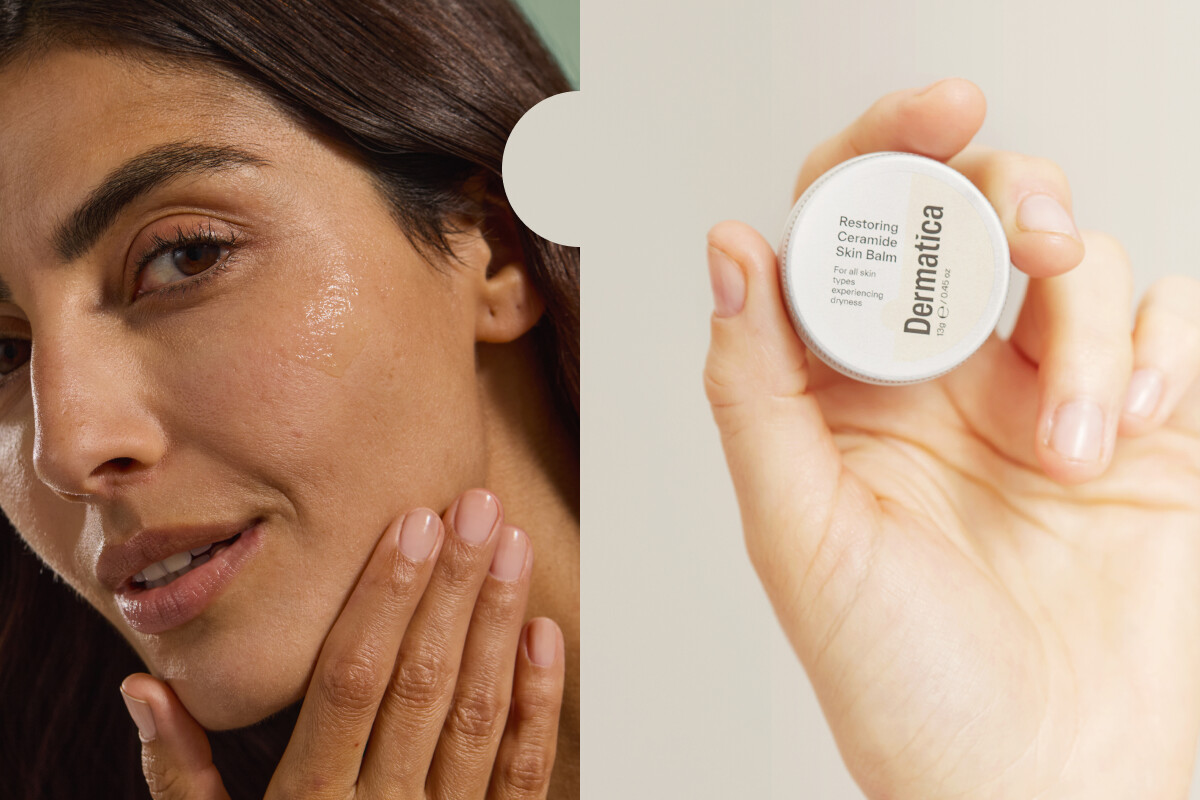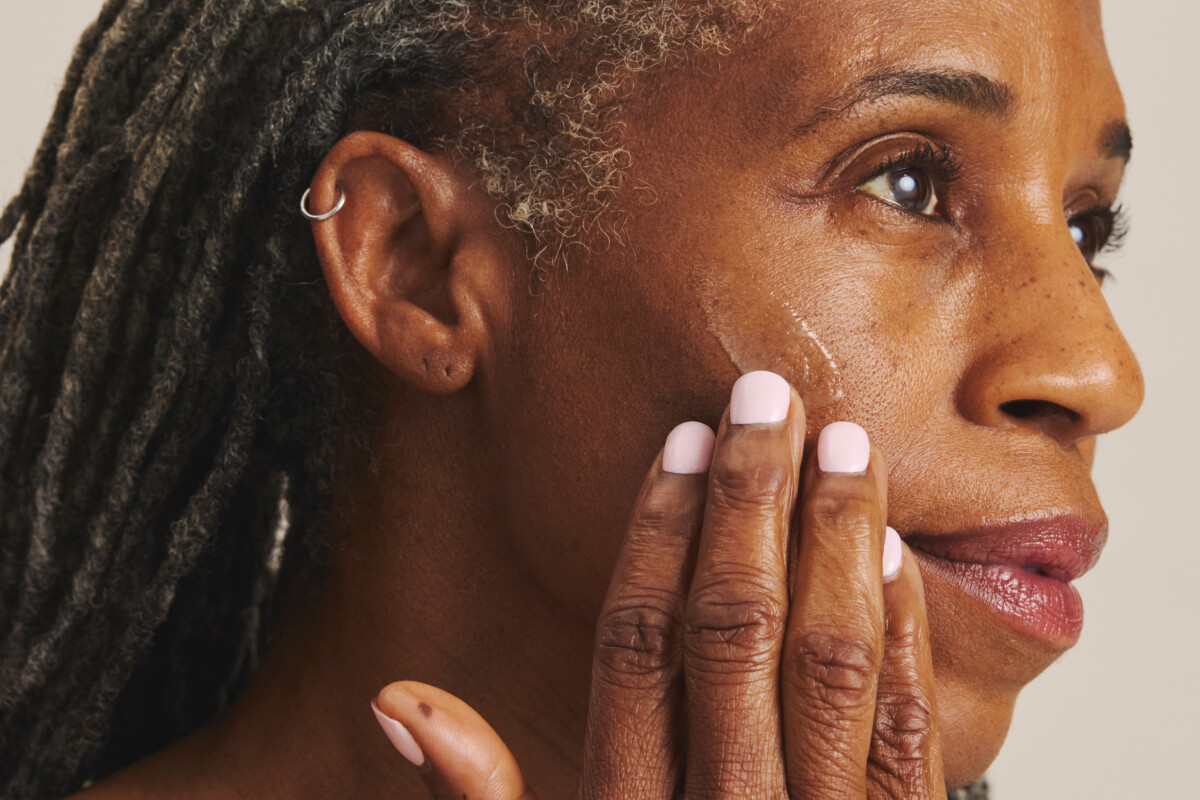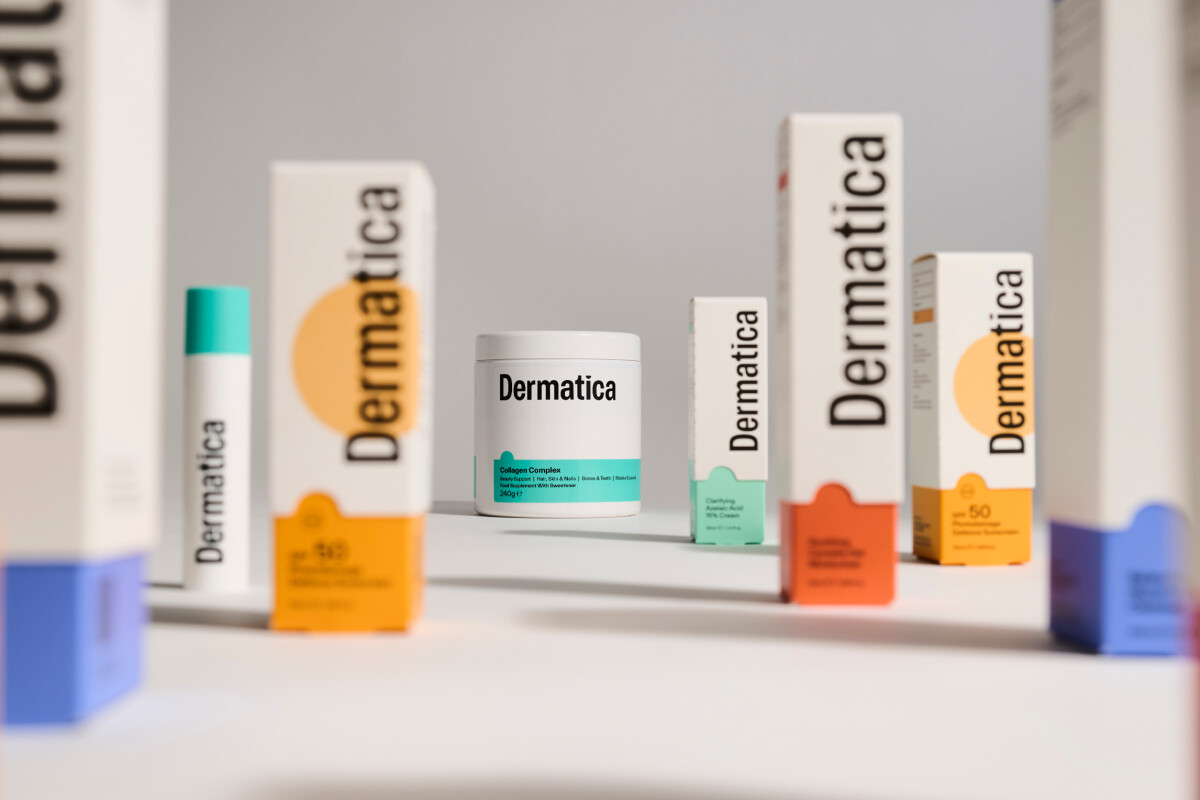Considering whether to try Botox®? Or are you a regular Botox® user starting a prescription retinoid treatment? If you’re worried about how safe it is to use tretinoin and Botox® to reach your skin goals, this article will help tell you everything you need to know.
Botox® and retinoids can be effective ways to help slow down and fade visible signs of ageing. If slowing ageing is a skin goal of yours, these treatments can complement each other, and make sure your skin stays healthy, youthful and glowing for longer.
Do you have to choose Botox® or tretinoin?
The good news is, no, you don’t have to choose. You can combine many cosmetic and injectable treatments like Botox® with retinoids like the one in your personalised formula (but it’s still always important to check). The main thing to remember is that tretinoin and other active ingredients can increase skin cell turnover and renewal, which can make your skin more sensitive than usual – especially when you first start.
Botox® works on the muscles underneath the skin, while tretinoin is a topical retinoid applied only on the surface layer of the skin (epidermis) during your nightly skincare routine. Neither interferes with the other. (1)
Botox® affects the facial muscles beneath the skin
Botox® (Botulinum toxin) is a muscle relaxer injected into your facial muscles. This prevents the nerves from signalling to your facial muscles. This temporarily paralyses them, leading to less skin movement and softened facial wrinkles. It’s commonly used to reduce forehead lines, crow’s feet (lines around your eyes), marionette lines (around the mouth), and frown lines (between the eyebrows), but it won’t have much effect on very fine wrinkles.
Botox® can significantly reduce the appearance of wrinkles, but it doesn’t affect the skin directly. It works solely on the muscular level by preventing the contractions that cause wrinkles to develop in the first place. (2)
Once you’ve had Botox® injections, it can take 7–14 days to see the effects. The affected muscles won’t be able to contract for around 3–6 months. After that, the signals will return, your facial muscles will begin moving again, and wrinkles will become visible until they’re treated once more. However, they can become less noticeable with time because your muscles will shrink slightly. (3)
Tretinoin (and active ingredients) interact with skin, not muscles
Tretinoin is a type of retinoid that only affects the surface layers of facial skin, not the facial muscles. It’s a popular prescription treatment for common skin concerns like acne and hyperpigmentation, as well as visible signs of photodamage and premature skin ageing (photoageing).
Topical tretinoin is a powerful skincare ingredient that works by speeding up your body’s cell turnover rate, causing your facial skin to produce new cells faster. This increased production also boosts collagen levels in the skin, evens out skin tone, smooths skin texture, and promotes healthier, less visibly aged skin. Noticeable results usually take around 6-8 weeks. (4)
Because tretinoin and Botox® target different parts of the body, it’s generally considered safe to use both treatments at the same time, regardless of your skin type or tone – even if you have sensitive skin.
Why you might combine retinoids and Botox®
For deeper fine lines
Some find that Botox® is a good complement to their nightly retinoid treatment. The anti-ageing effects of Botox® are visibly noticeable and almost instant, however the results aren’t lasting or long term. When a topical treatment like tretinoin is used consistently, it can boost collagen production in the skin, leading to plumper, smoother skin and fewer visible fine lines. (5)
For treating sun damage
Sun damage is the leading cause of premature ageing. Because Botox® doesn’t directly affect the skin, wrinkles from sun damage don’t respond as noticeably from Botox® compared to wrinkles caused by muscular contraction. However, wrinkles and sunspots caused by sun damage do respond to tretinoin, which is why combining Botox® with tretinoin is a powerful and effective treatment to slow down and reverse all causes of visible skin ageing. (6)
For treating multiple skin concerns at the same time
Botox® targets dynamic wrinkles from repetitive muscle movements, such as forehead lines and crow’s feet. Tretinoin addresses static wrinkles, sun damage, and uneven skin texture. Tretinoin is also often prescribed to people who have chronic acne and/or hyperpigmentation. By using both treatments at the same time, individuals can tackle multiple skin concerns and signs of ageing comprehensively – resulting in smoother, firmer, more even-toned and healthier skin. (7)
How to combine retinoids and Botox®
There are a few simple safety measures we recommend if you’re using retinoids like tretinoin alongside Botox® injections:
– Inform your cosmetician, aesthetician, or clinician that you’re using tretinoin and any other prescription-strength active ingredients.
– Don’t use your Dermatica treatment for 7 days before any cosmetic procedure. Resume use a few days after treatment, once your skin feels like it’s back to normal.
– Follow the aftercare instructions provided by your practitioner, which may include avoiding certain skincare products or treatments that could irritate your skin while it recovers from the procedure.
– Space out your treatments. It’s generally recommended to wait at least 7 days between getting Botox® injections and using tretinoin or other retinoids. This allows your skin to fully recover from the Botox® injections to avoid skin irritation or any other adverse reactions.
– Start with a lower concentration of tretinoin if you’re new to using it, gradually increasing as your skin adjusts.
– Pay attention to how your skin reacts to the combination of tretinoin and Botox®. If you notice any adverse effects, ask your dermatologist, healthcare provider, or the Dermatica team for personalised guidance.
Starting tretinoin or another formula from Dermatica?
If you have more questions about combining Botox® and tretinoin, our dermatology team at Dermatica are experts in skincare and ready to help. As a subscriber, you can access personalised advice at any time via your dashboard. If not, do reach out to your dermatologist or healthcare provider for more information.
Recommended skincare for Botox® and tretinoin
We recommend using fragrance-free, alcohol-free skincare products that are gentle yet effective on the skin and enhance the benefits of active ingredients. To shop our range of science-backed routine essentials, click here.
Conclusion
When we create personalised treatment plans for you at Dermatica, we start you on a low dose of active ingredients. This gives your skin time to adjust to prevent irritation. When combined properly, it’s generally safe to use Botox® with tretinoin and other retinoids. These two treatments target different aspects of skin ageing and can complement each other to bring you your best results even faster.
Interested in trying a personalised anti-ageing treatment, and get science-backed skincare advice from a licensed dermatology team? Find out which formulas are best suited to your skin type.
References
1) Jankovic, J. (2009). Botulinum toxin: state of the art. Movement Disorders, 24(S2), S1–S3. https://doi.org/10.1002/mds.22598
2) Carruthers, J., & Carruthers, A. (1999). Botox for the treatment of dynamic and hyperkinetic facial lines and furrows: adjunctive use in facial aesthetic surgery. Plastic and Reconstructive Surgery, 103(2), 701–713. https://doi.org/10.1097/00006534-199902000-00055
3) Rosales, R. L., & Dressler, D. (2010). On muscle spindles, dystonia and botulinum toxin. European Journal of Neurology, 17(S1), 71–80. https://doi.org/10.1111/j.1468-1331.2010.03120.x
4) Cotofana, S., Fratila, A. A., Schenck, T. L., Redka-Swoboda, W., Zilinsky, I., Pavicic, T., Kaya, G., & Fritz, K. (2017). Toward the categorization of subcutaneous fat in standard anatomical regions: A reference study in 21,980 MRI scans. Plastic and Reconstructive Surgery, 139(6), 1286–1296. https://doi.org/10.1097/PRS.0000000000003352
5) Smith, A. J., Oertli, D., Yang, Q., Monard, S., Zhu, X., Cheng, D., & Rogler, G. (2020). The anti-inflammatory effects of glucocorticoids in murine jejunoileitis are mediated by the epithelial glucocorticoid receptor. Frontiers in Immunology, 11, 1946. https://doi.org/10.3389/fimmu.2020.01946
6) García, A. D., & García-Fernández, J. (2020). Physiology, Cortisol. In StatPearls [Internet]. StatPearls Publishing. Available from: https://www.ncbi.nlm.nih.gov/books/NBK574523/
7) Ting, W., Schultz, K., & Cula, G. O. (2020). Physiology, Vitamin A. In StatPearls [Internet]. StatPearls Publishing. Available from: https://www.ncbi.nlm.nih.gov/books/NBK557478/
Dr Lynn Sydor
Dr. Lynn Sydor is a board-certified dermatologist with 30 years of experience in the field. Dr. Sydor is a member of the American Academy of Dermatology, the California Society of Dermatology and Dermatologic Surgery, the Pacific Dermatologic Association, and the California Medical Association.

